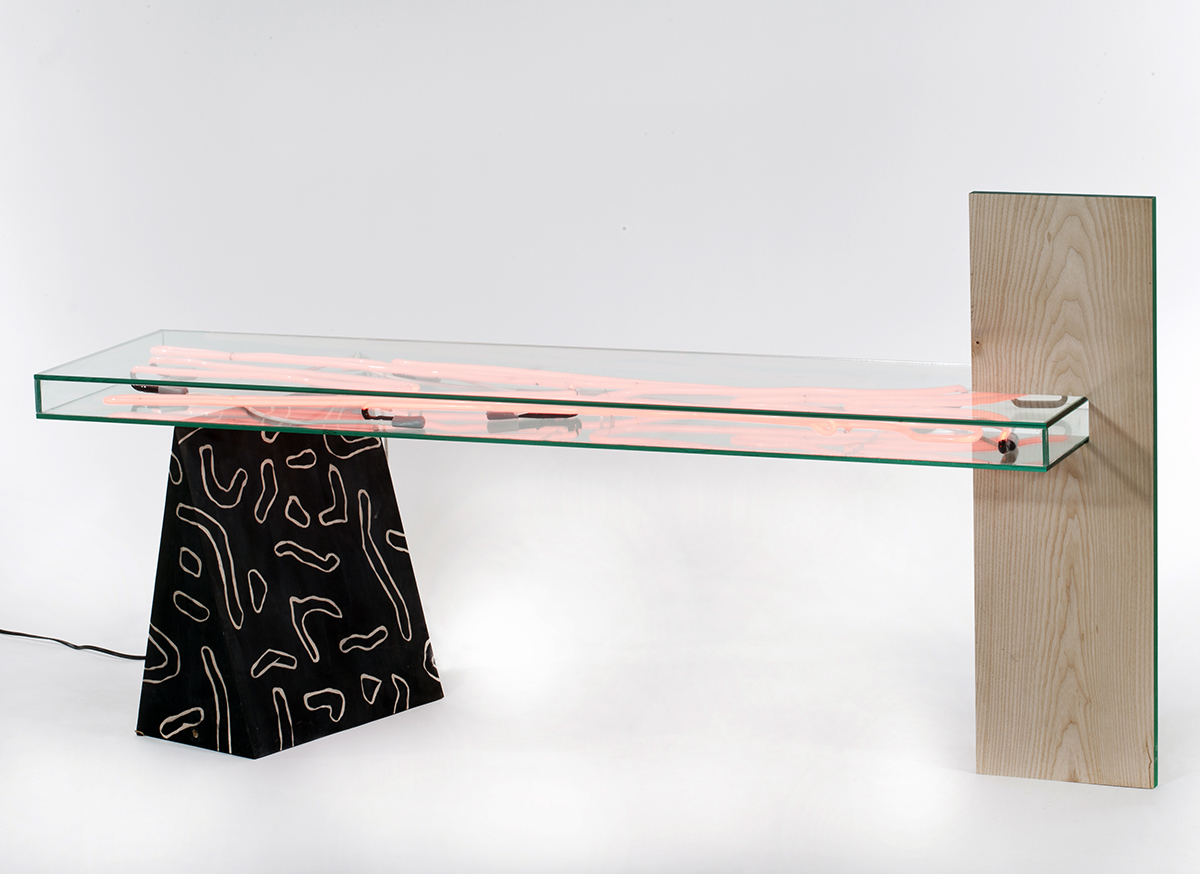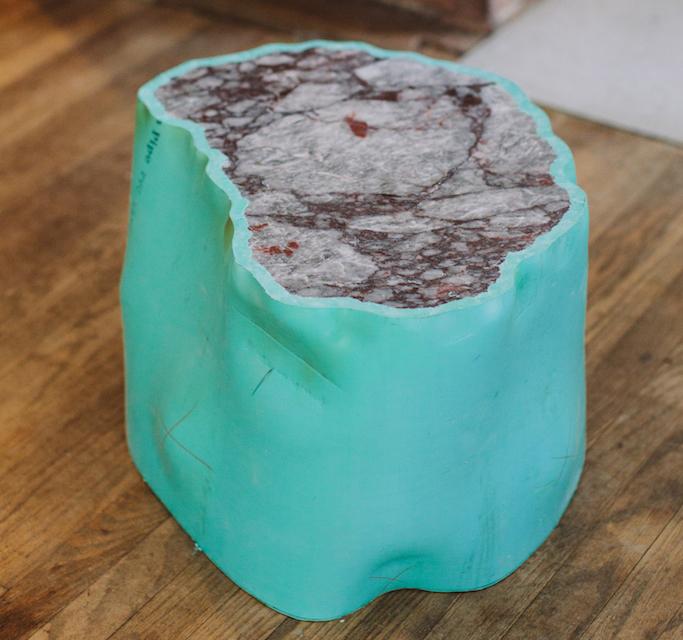
10.24.13
Up and Coming
24-Year-Old Misha Kahn May End Up Being Our Biggest Discovery Yet
The first time we met Misha Kahn, he was slapping gold metallic wallpaper with long-lashed googly eyes onto the walls of a tiny room we’d afforded four RISD students at our 2011 Noho Design District showcase. We were never sure quite what to make of the wallpaper — was it technically even “furniture design,” or was it more a piece of Surrealist art? — but we knew from first sight that we loved it. Which is pretty much how we’ve felt about all of the work that’s followed from the Brooklyn-based, Duluth, Minnesota–born designer’s studio, whether it’s a pink bench made from layers of resin and trash, a series of tables that resemble Froebel blocks on acid, or sewn cement pieces that look like the work of a woozy Jeff Koons.

